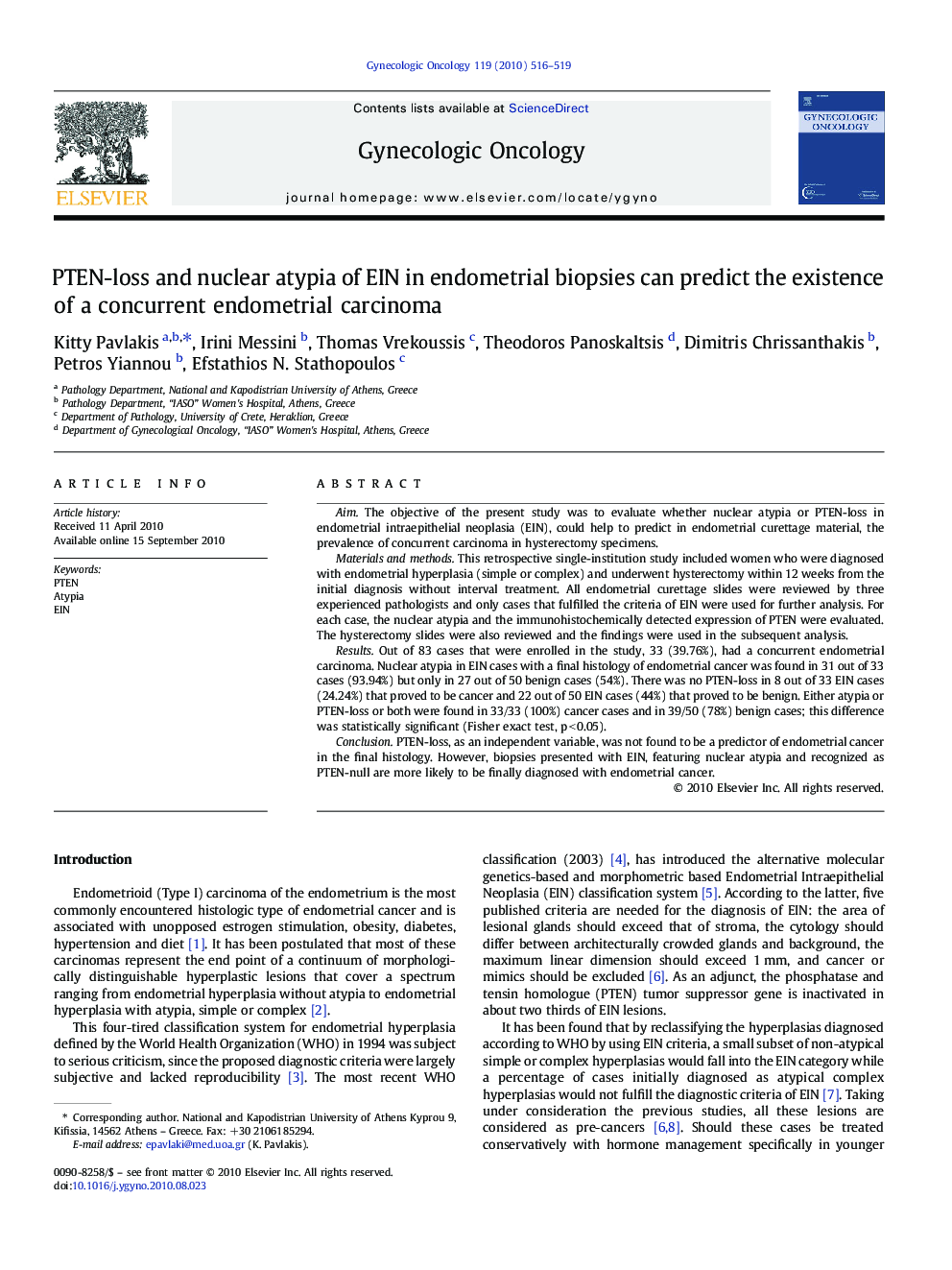| Article ID | Journal | Published Year | Pages | File Type |
|---|---|---|---|---|
| 3944034 | Gynecologic Oncology | 2010 | 4 Pages |
AimThe objective of the present study was to evaluate whether nuclear atypia or PTEN-loss in endometrial intraepithelial neoplasia (EIN), could help to predict in endometrial curettage material, the prevalence of concurrent carcinoma in hysterectomy specimens.Materials and methodsThis retrospective single-institution study included women who were diagnosed with endometrial hyperplasia (simple or complex) and underwent hysterectomy within 12 weeks from the initial diagnosis without interval treatment. All endometrial curettage slides were reviewed by three experienced pathologists and only cases that fulfilled the criteria of EIN were used for further analysis. For each case, the nuclear atypia and the immunohistochemically detected expression of PTEN were evaluated. The hysterectomy slides were also reviewed and the findings were used in the subsequent analysis.ResultsOut of 83 cases that were enrolled in the study, 33 (39.76%), had a concurrent endometrial carcinoma. Nuclear atypia in EIN cases with a final histology of endometrial cancer was found in 31 out of 33 cases (93.94%) but only in 27 out of 50 benign cases (54%). There was no PTEN-loss in 8 out of 33 EIN cases (24.24%) that proved to be cancer and 22 out of 50 EIN cases (44%) that proved to be benign. Either atypia or PTEN-loss or both were found in 33/33 (100%) cancer cases and in 39/50 (78%) benign cases; this difference was statistically significant (Fisher exact test, p < 0.05).ConclusionPTEN-loss, as an independent variable, was not found to be a predictor of endometrial cancer in the final histology. However, biopsies presented with EIN, featuring nuclear atypia and recognized as PTEN-null are more likely to be finally diagnosed with endometrial cancer.
